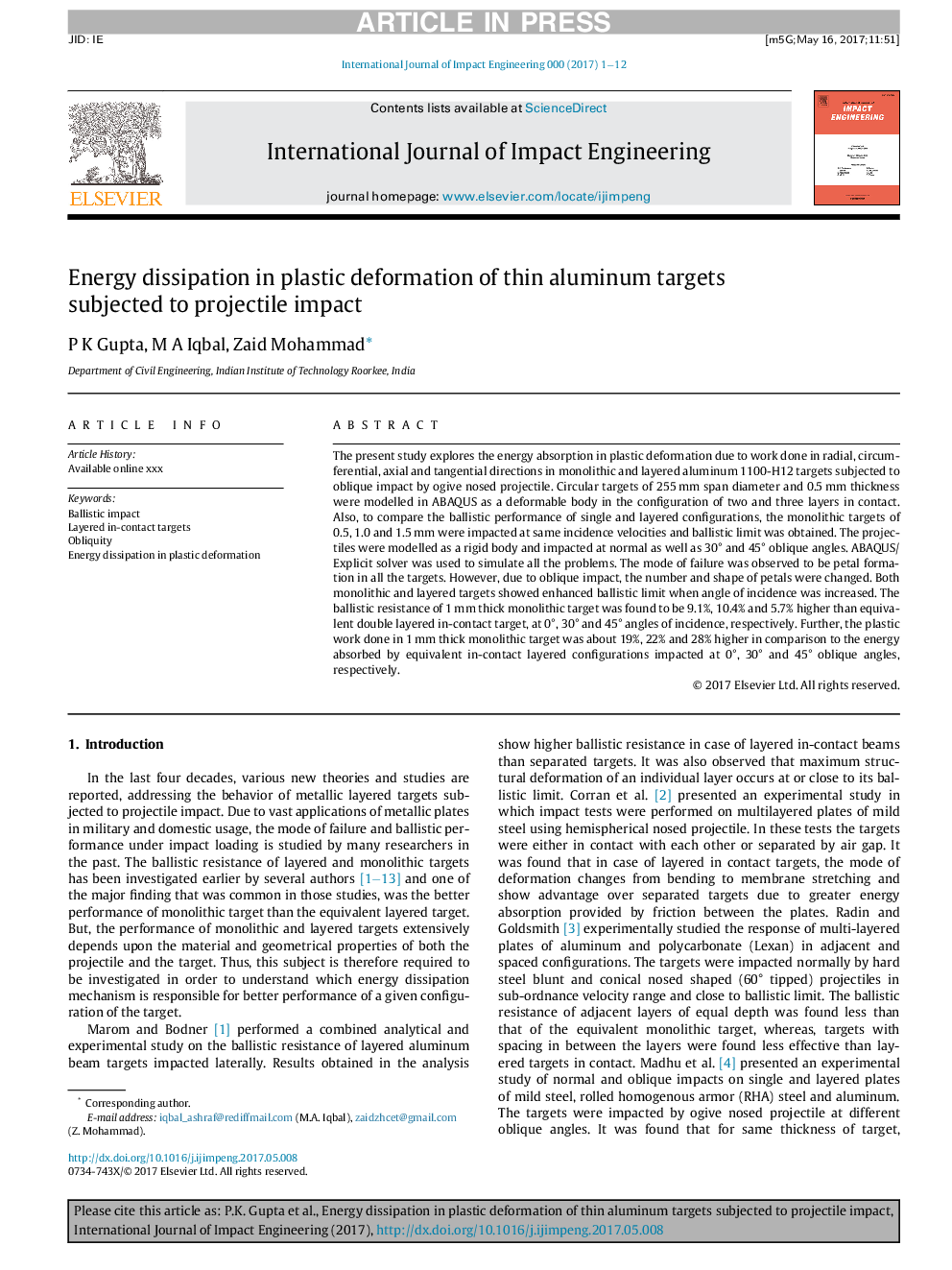| Article ID | Journal | Published Year | Pages | File Type |
|---|---|---|---|---|
| 7173066 | International Journal of Impact Engineering | 2017 | 12 Pages |
Abstract
The present study explores the energy absorption in plastic deformation due to work done in radial, circumferential, axial and tangential directions in monolithic and layered aluminum 1100-H12 targets subjected to oblique impact by ogive nosed projectile. Circular targets of 255 mm span diameter and 0.5 mm thickness were modelled in ABAQUS as a deformable body in the configuration of two and three layers in contact. Also, to compare the ballistic performance of single and layered configurations, the monolithic targets of 0.5, 1.0 and 1.5 mm were impacted at same incidence velocities and ballistic limit was obtained. The projectiles were modelled as a rigid body and impacted at normal as well as 30° and 45° oblique angles. ABAQUS/Explicit solver was used to simulate all the problems. The mode of failure was observed to be petal formation in all the targets. However, due to oblique impact, the number and shape of petals were changed. Both monolithic and layered targets showed enhanced ballistic limit when angle of incidence was increased. The ballistic resistance of 1 mm thick monolithic target was found to be 9.1%, 10.4% and 5.7% higher than equivalent double layered in-contact target, at 0°, 30° and 45° angles of incidence, respectively. Further, the plastic work done in 1 mm thick monolithic target was about 19%, 22% and 28% higher in comparison to the energy absorbed by equivalent in-contact layered configurations impacted at 0°, 30° and 45° oblique angles, respectively.
Keywords
Related Topics
Physical Sciences and Engineering
Engineering
Mechanical Engineering
Authors
P K Gupta, M A Iqbal, Zaid Mohammad,
